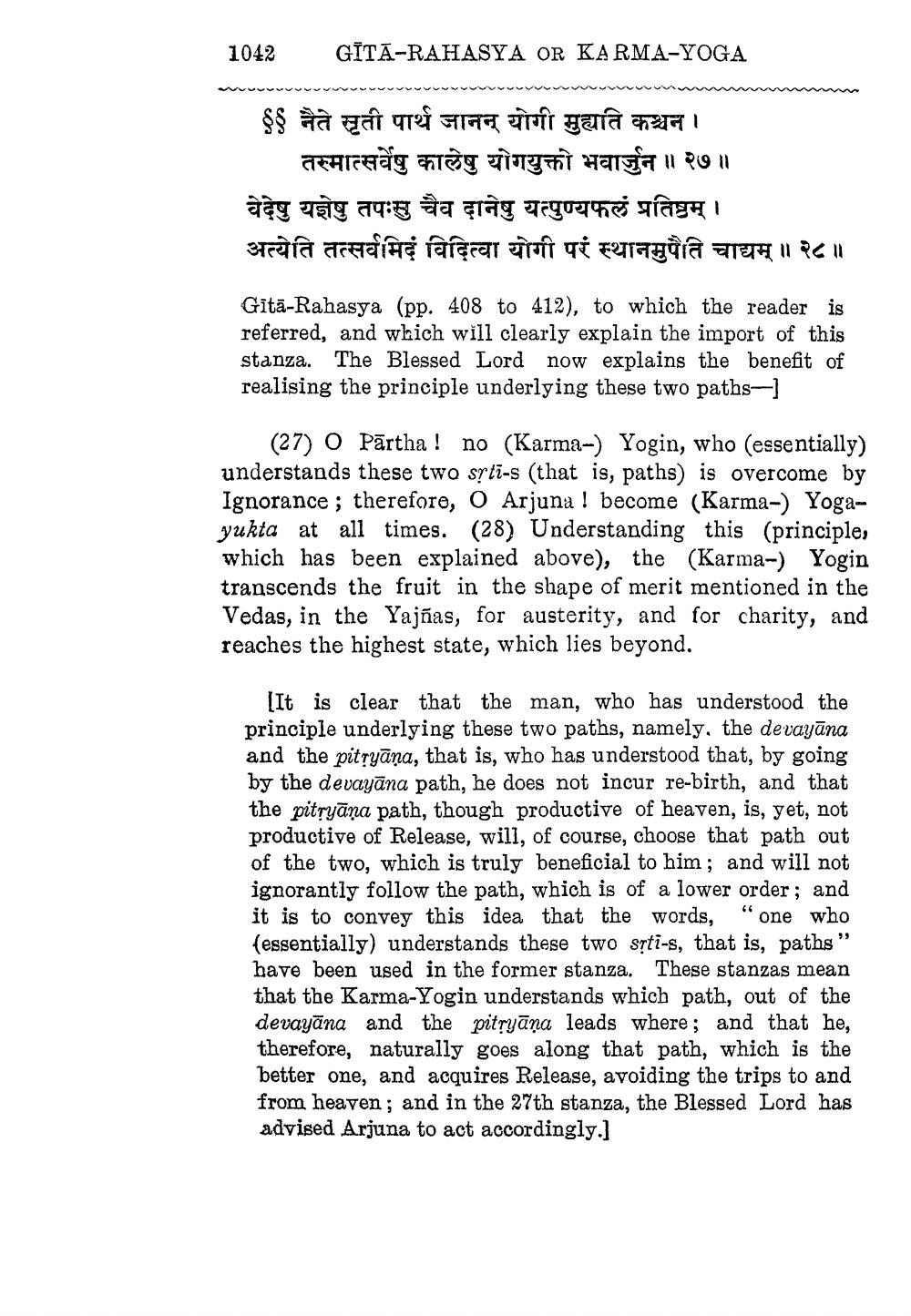________________
1042
GĪTĀ-RAHASYA OR KARMA-YOGA
६ नैते सृती पार्थ जानन् योगी मुह्यति कश्चन ।
तस्मात्सर्वेषु कालेषु योगयुक्तो भवार्जुन ॥२७॥ वेदेषु यज्ञेषु तपासु चैव दानेषु यत्पुण्यफलं प्रतिष्ठम् । अत्येति तत्सर्वमिदं विदित्वा योगी परं स्थानमुपैति चाद्यम् ॥ २८ ॥
Gītā-Rahasya (pp. 408 to 412), to which the reader is referred, and which will clearly explain the import of this stanza. The Blessed Lord now explains the benefit of realising the principle underlying these two paths-]
(27) O Pārtha ! no (Karma-) Yogin, who (essentially) understands these two sytī-s (that is, paths) is overcome by Ignorance; therefore, O Arjuna ! become (Karma-) Yogayukta at all times. (28) Understanding this (principle, which has been explained above), the (Karma-) Yogin transcends the fruit in the shape of merit mentioned in the Vedas, in the Yajñas, for austerity, and for charity, and reaches the highest state, which lies beyond.
(It is clear that the man, who has understood the principle underlying these two paths, namely, the devayāna and the pittyāna, that is, who has understood that, by going by the devayāna path, he does not incur re-birth, and that the pitryāņa path, though productive of heaven, is, yet, not productive of Release, will, of course, choose that path out of the two, which is truly beneficial to him; and will not ignorantly follow the path, which is of a lower order; and it is to convey this idea that the words, “one who (essentially) understands these two sȚti-s, that is, paths" have been used in the former stanza. These stanzas mean that the Karma-Yogin understands which path, out of the devayāna and the pitryāņa leads where; and that he, therefore, naturally goes along that path, which is the better one, and acquires Release, avoiding the trips to and from heaven; and in the 27th stanza, the Blessed Lord has advised Arjuna to act accordingly.]




